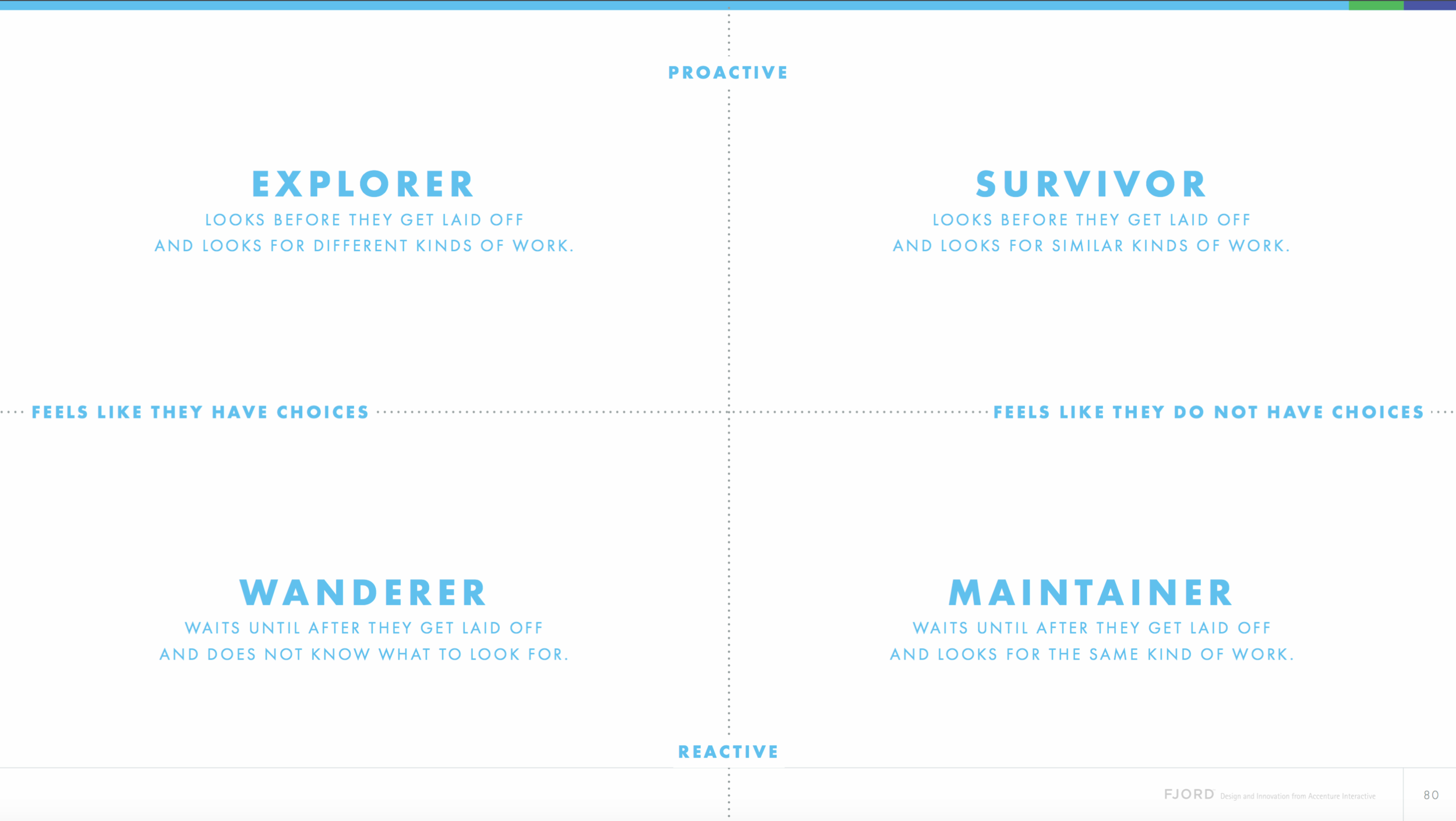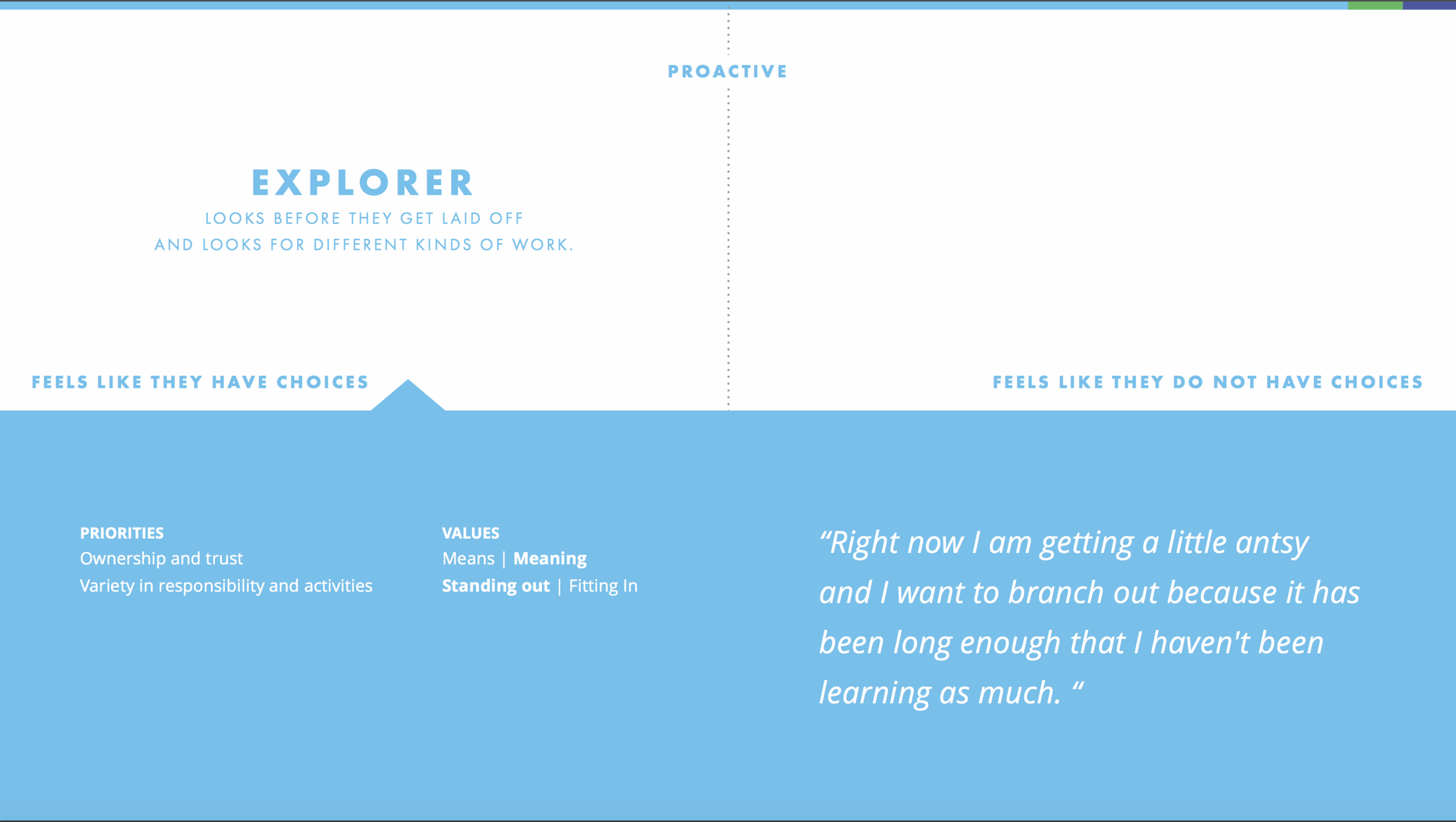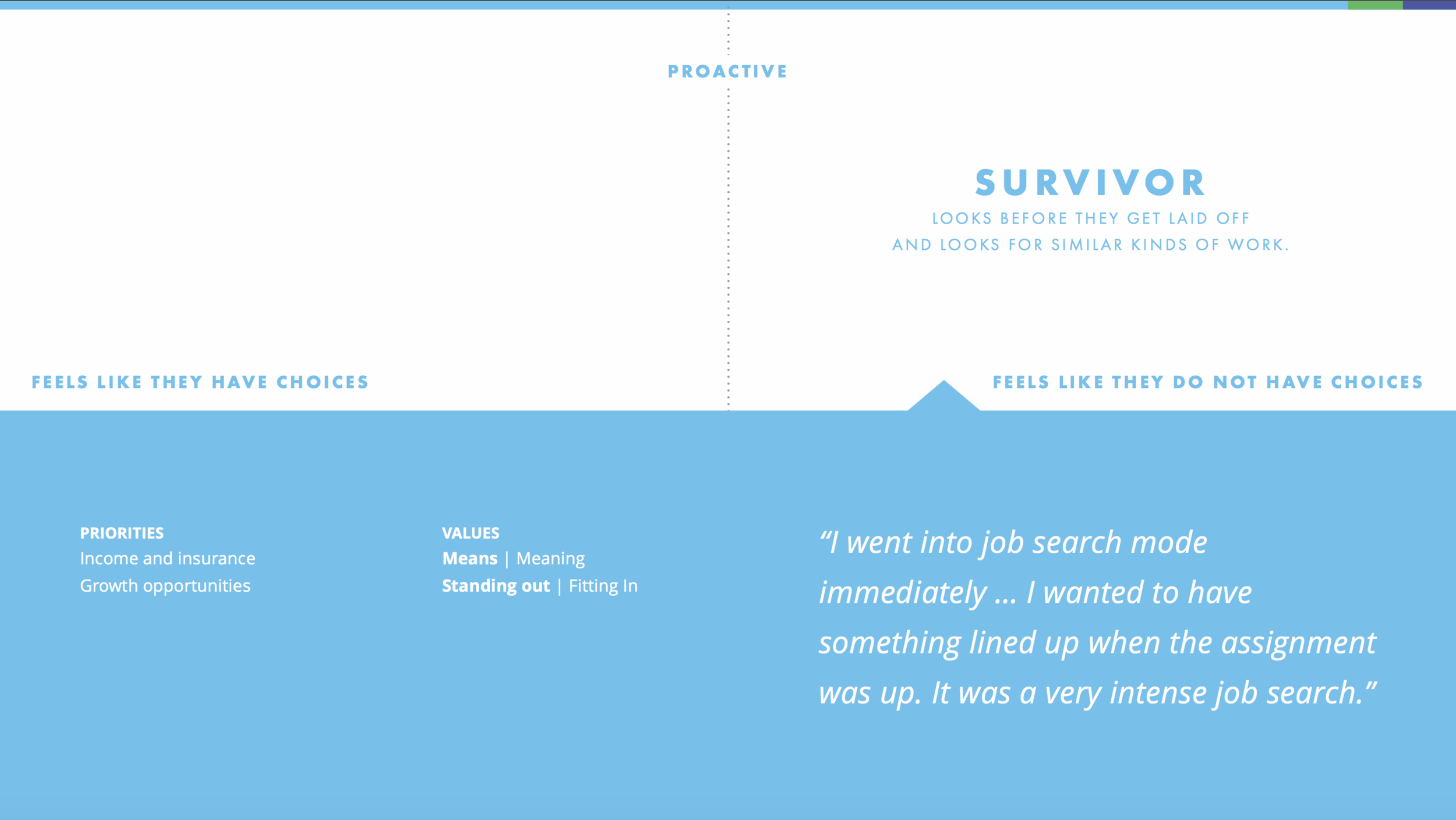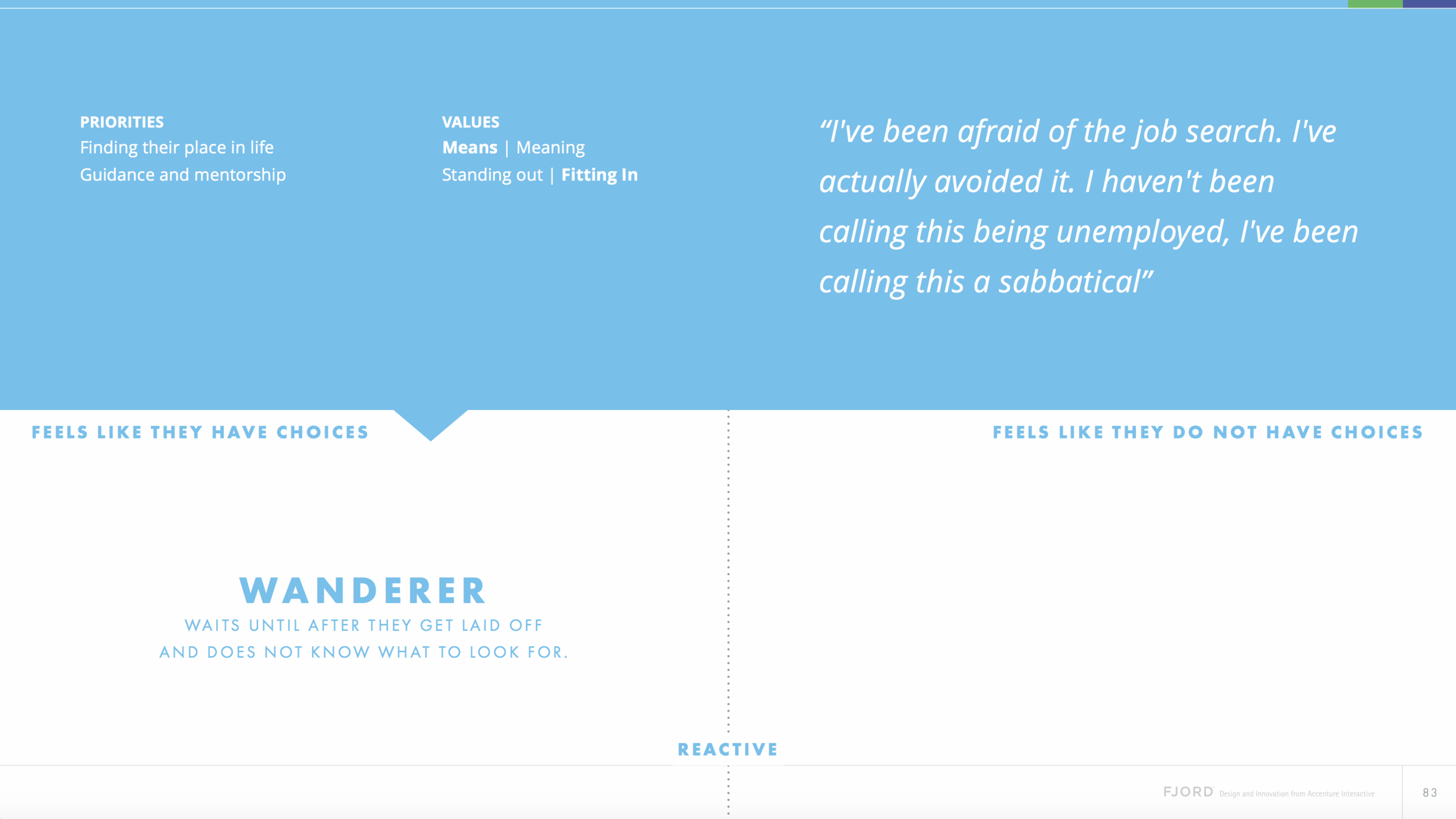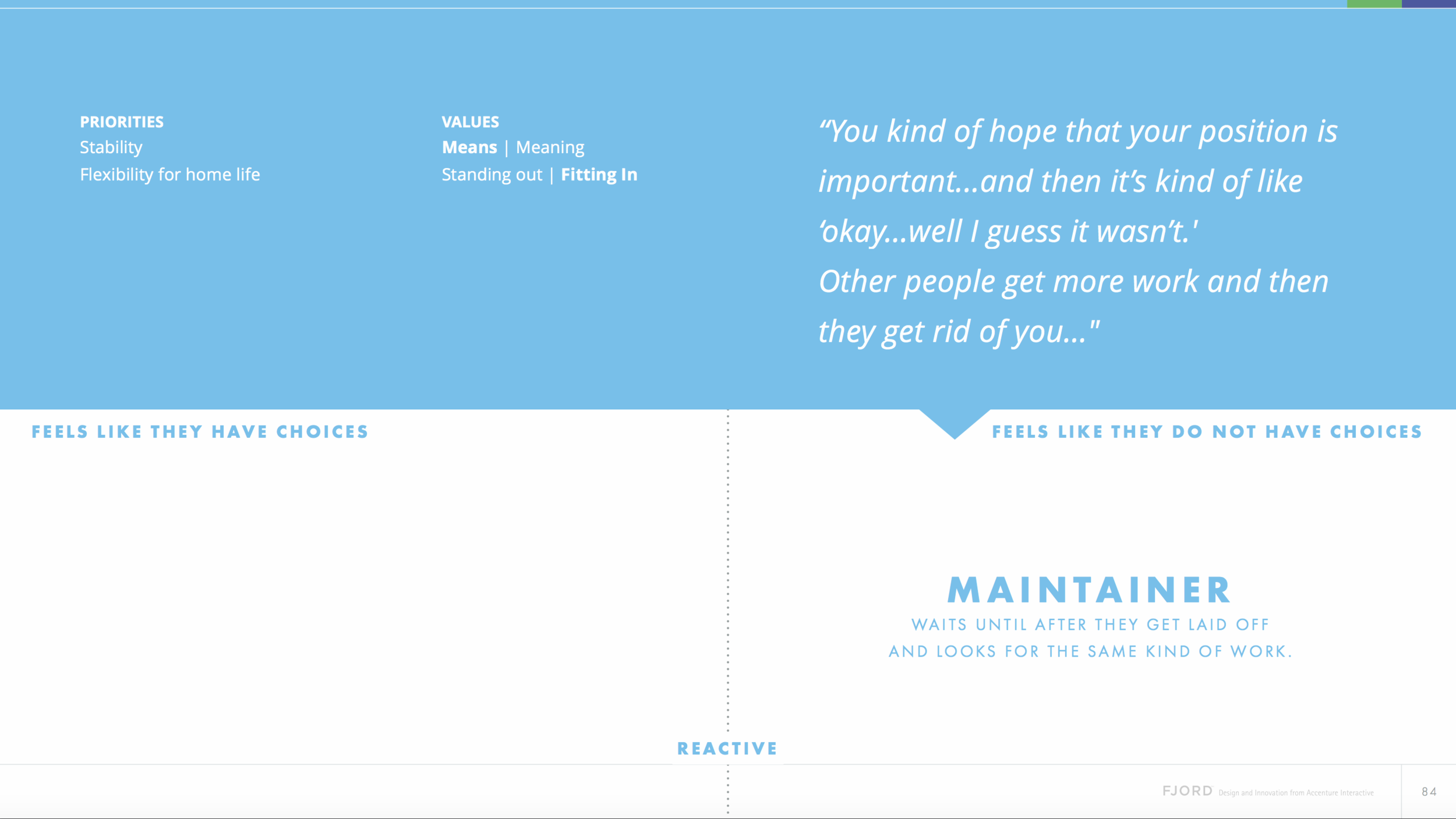Creating a more resilient workforce and a path forward for office workers
Runway
In March of 2017, a group of designers embarked on a passion project.
We wanted to study the unintended consequences of digital technologies on workers so we needed to understand the stories of a diverse set of workers and experts.
After dozens of conversations it became apparent that intelligent machines and automation were uprooting these workers' lives. It was imperative that they find ways to adapt to the transformed work environment. I collaborated in a small, multidisciplinary team of designers to address the impacts of automation on office workers in the U.S.
My Role
I worked as one of two interaction and service designers on this project. I drove our user research, defining both approach and execution. I was a key contributor to the development of the concept of Runway from ideation to testing, and I led the production of our final deliverables.
We had confidence in our approach because it was grounded in real human needs.
Through expert interviews and tens of hours of desk (and train and kitchen table and bed) research, we sought to understand the state of job automation in today's workplace. We challenged ourselves to consider the technologies used, the people affected, the industries most at risk, the work currently being done, and how we might fit in this large, complex ecosystem.
We chose to target solutions for "middle-skilled" workers doing mostly administrative office work. To better understand this demographic, we surveyed nearly 1,000 respondents to identify participants for in-depth interviews. We developed mindsets with regard to the ways in which people respond to change.
We prioritized the Maintainer mindset since it is one in which people are reactive to change and have few choices. This provided the biggest opportunity for impact.
Seemingly small changes to our methods and work space helped to ensure we never lost sight of the real people we were designing for. On the most prominent wall in our project room, I pinned pictures of each of our interview participants along with completed interview debrief sheets. The visual reminder in the room kept us accountable for every decision we made.
We created Runway.
We determined that, based on trends across various industries, digital technologies will continue to change work at a relentless pace. It would no longer be enough for workers to learn new skills. It was important that we prioritized helping people to accept change and empowered them to believe that they could adapt.
We designed Runway as an experimental program to connect a team of workers with a change coach on a series of "flights," rotating the team across different work environments and roles. We wanted to help workers discover new possibilities, connect new skills and help them develop the confidence to succeed in continuously shifting work environments.
With unlimited resources and time we would have initiated a pilot program, but unfortunately our constraints were too tight.
We had to pivot.
We decided to create pitch material for investment in our program. As a multinational corporation engaging in a diverse range of businesses and financial vested interest, the clear primary target for this pitch was our parent company, Accenture.
We wanted to create a world our audience could relate to and connect with. We decided to create a motion graphic to tell our story, despite the fact that our team had very little experience with them as storytelling vehicles. But we needed to tell the story of Runway in the right way for the context, even if none of us had the experience to do that.
The pitch material would move us closer to actualizing Runway and educating real people in adapting to changing work environments, but it didn’t achieve our goal of having immediate impact for workers. We created Action Packs as a part of our set of deliverables to address this.
Action Packs were designed to help workers and instigate change for those who design for them. Each pack contained activities to help assess automation risk and ways to implement incremental changes in how we work to combat this risk.
I owned the production of our deliverables. I created the activities for the action packs, ran iterative testing sessions, and finalized all copy and visuals. I wrote the first drafts of our motion graphic script with revisions from the team. Before contracting a full-time motion designer, I helped create low fidelity animatics to test the flow of our story. Once our motion designer joined the team, I assumed a supervisory role on the project. I tracked timelines and budget, reviewed visual and motion design, and performed the final voice over.
We made a difference.
Runway succeeded in gaining traction within Accenture, informing other research programs and experimental pilots.
This work was used as an input into the Accenture inclusive future of work report.
Ehud Paz continues to represent the broader Runway team, connecting with Accenture’s corporate citizenship group about an experimental pilot which is currently underway.

